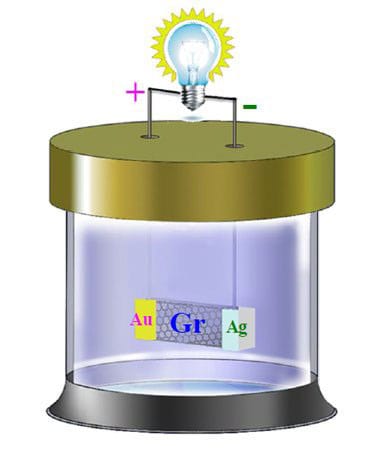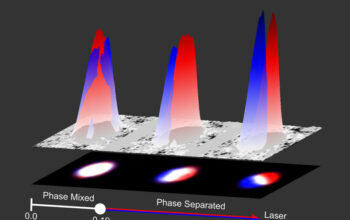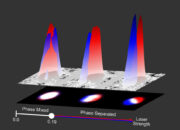In the evolving landscape of energy storage and conversion, graphene has emerged as a pivotal player, reminiscent of the phoenix rising from the ashes of traditional materials. As researchers delve into the depths of this two-dimensional wonder, the prospect of insatiable energy demands being met through battery technology seems increasingly plausible. This exploration of graphene in battery technology is not merely an academic discourse; it represents the confluence of material science and engineering that could redefine how we harness energy.
Graphene, a crystalline allotrope of carbon, is remarkable for its structure—a single layer of carbon atoms arranged in a two-dimensional honeycomb lattice. This atomic arrangement begets its extraordinary properties, including unmatched electrical conductivity, exceptional thermal management, and significant mechanical strength. When comparing traditional battery materials, grappling with their inherent limitations, this metamaterial shines like a beacon in the night.
The conventional battery landscape is predominantly dominated by lithium-ion technology, which, while revolutionary, grapples with several existential challenges. These include the degradation of cathodes during cycling, relatively slow charge rates, and thermal runaway—events that could lead to catastrophic failures. Imagine these drawbacks as clouds casting shadows upon an otherwise bright day. Enter graphene, whose integration into battery architectures promises to eradicate, or at least alleviate, these persistent issues.
Incorporating graphene into the anodes and cathodes of batteries is akin to introducing a symphony conductor into an orchestra. Graphene’s exceptional electrical conductivity facilitates rapid electron transport, akin to the swift currents that power a raging river. By fostering enhanced ion diffusion and reduced charge times, graphene-based batteries could substantially diminish the duration required for charging, transforming the waiting game associated with electric vehicles into a minor inconvenience.
The genesis of graphene-enhanced battery technology lies partly in its capacity to augment the existing lithium-ion framework. Notably, researchers have found that when embedded in silicon—or other materials—graphene serves as a stabilizing matrix that alleviates the volumetric expansion that typically plagues silicon anodes. This problem is akin to a balloon inflating to the point of bursting; the expansion leads to cracking and eventual failure of traditional materials. Graphene mitigates these stresses, allowing for the longevity and resilience of the anode structure.
Moreover, the potential to engineer bespoke battery performance is tantalizing. The unique properties of graphene allow for the possibility of creating batteries that can be tailored for specific applications. From lightweight energy storage solutions for drones to ultra-fast charging devices for consumer electronics, the applications of graphene-based batteries are as varied as they are promising. Engineers and physicists are now poised at the brink of what could be an energy renaissance, where the efficiencies of the past give way to unprecedented capabilities.
While the prospects are luminous, the journey toward commercial viability is riddled with challenges. The scalability of graphene production remains a formidable barrier to widespread adoption. Currently, methods such as chemical vapor deposition (CVD) and liquid-phase exfoliation are being explored, yet each technique brings its own intricacies and cost implications. The dream of a ubiquitous graphene battery lies in the balance of economical production methods, enabling a reduction in material costs while ensuring the quality and integrity of the graphene itself.
Environmental considerations also play a significant role in the discourse surrounding graphene’s integration into battery technology. The synthesis processes involved must be sustainable to ensure that the environmental footprint of these innovations does not outweigh their benefits. As researchers strive to establish less invasive production techniques, the ethos of green chemistry remains integral to the narrative of graphene battery development.
A salient aspect of the discourse surrounding graphene in battery technology is the ongoing competition with alternative materials. Other nascent technologies, such as solid-state batteries and lithium-sulfur formulations, vie for attention as potential solutions. Analogous to competing actors vying for the lead role in a grand play, each technology brings unique strengths and weaknesses to the forefront. However, graphene has the potential to complement rather than compete with these innovations, ultimately leading to hybrid systems that harness the best of all worlds.
Looking towards the horizon, the interplay between graphene-based batteries and renewable energy systems emerges as a critical narrative thread in the ongoing saga of energy sustainability. The ability to store energy created from intermittent sources, such as solar and wind, could be vastly enhanced with graphene technologies. This synergy presents a tantalizing vision of a future where clean energy can be stored efficiently, unleashing a cascade of possibilities ranging from grid stability to energy independence.
In conclusion, the exploration of graphene and its application in battery technology heralds a transformative shift in the way we perceive energy storage. The metaphorical phoenix rising from the ashes of conventional materials is more than an adage; it embodies the myriad of possibilities that graphene could unlock. As science continues to peel back the layers of this remarkable material, our understanding of energy storage and its implications for future generations will evolve, painting a picture that is both promising and essential.










